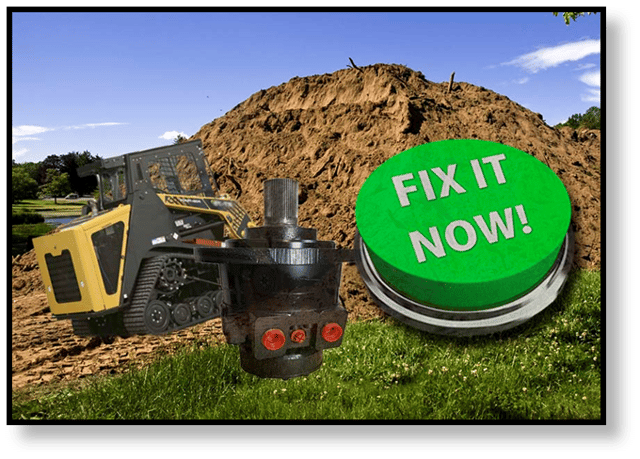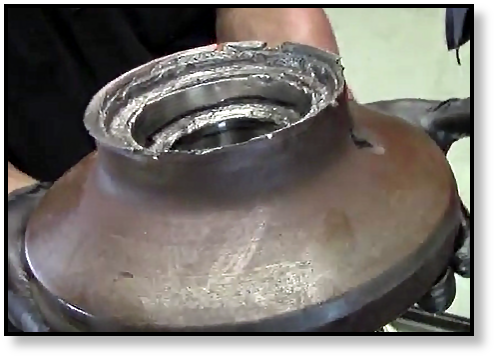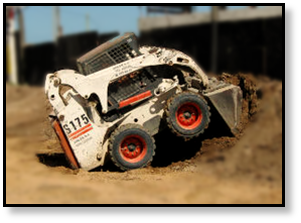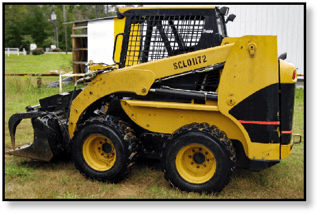Skid Steer Quick Attach Plate
Problems With Your Skid Steer Loader?

It’s vital that your skid steer keeps rolling, and your hydraulic motors are the key! In this Shop Talk blog post, we are going to talk about 5 signs that your skid steer hydraulic motors need service. We’ll also talk about what those signs could mean, and how to make sure that the problem is with your final drive hydraulic motor and not some other part of your skid steer.
Interested in skid steers? Check out these other Shop Talk blog posts:
- 18 Tips to Help Minimize Operating Costs for Skid Steers
- Skid Steer Motion and Hydraulic Motors
- Tips for Purchasing a Used Skid Steer
Sweepster Skid Steer Attachments
Sign #1: Leaks
If your final drive hydraulic motor is leaking fluid, that means you could be having trouble with either the seals or the bearings. Failure of either of these parts can lead to a domino effect of disaster, resulting in a totaled hydraulic motor that needs to be replaced.
Regularly perform a quick visual inspection on your SSL final drive motors to check for leaks, and get those leaks checked out as soon as they are discovered. Leaks not only allow key fluids to drain out, but they can allow damaging contaminants (such as dirt, sand, and grit) to make their way inside.
Sign #2: Excessive Noise or Vibration
If your hydraulic motor is making a lot of noise or if its vibrating, that can mean your bearings are worn out. Worn out bearings can lead to serious damage inside your hydraulic motor. You can see in the picture below an example of the aftermath of a bearing failure. This type of damage really can’t be repaired — you can’t fix chewed up metal.

If you or an operator notices excessive vibration and noise, it would probably be a good time to get your hydraulic motor serviced. You don’t want to wait until the damage reaches the point that the entire final drive motor has to be replaced.
Sign #3: Drive Refuses to Turn
A final drive that refuses to turn is a problem, but it doesn’t necessarily have to do with your hydraulic motor. If the drive motor isn’t turning, check that the brake is releasing and that the hydraulic fluid is reaching the drive. If that checks out, then your hydraulic motor may be worn out and need replacement. Notice we are focusing on the final drive and not the wheels – if the wheels aren’t turning, it could be something other than your final drive, such as a damaged drive shaft or chain.
Sign #4: Skid Steer Lacks Power
 As with a drive refusing to turn, a skid steer that doesn’t have much power can have problems that don’t directly involve the hydraulic motor. By lacking power, we mean that perhaps your skid steer just can’t make it up that hill or it can’t seem to carry that load it had no problem with a few days ago.
As with a drive refusing to turn, a skid steer that doesn’t have much power can have problems that don’t directly involve the hydraulic motor. By lacking power, we mean that perhaps your skid steer just can’t make it up that hill or it can’t seem to carry that load it had no problem with a few days ago.
You should check the the pressure at hydraulic motor. If your final drive is variable speed, make sure that it isn’t stuck at high speed; higher speed means less torque and less turning power. If those aren’t the problem, then you probably need some service on your hydraulic motor.
Sign #5: Steers to One Side
The same information applies to a skid steer that keeps steering to one side, except that means that it’s just one of the hydraulic motors lacking power. The motor with the problem will be on the same side that the skid steer is veering.
Conclusion: Keep Your Skid Steer Rolling!
Your hydraulic motors are literally what keeps your skid steer rolling, so if you have any of these signs be sure to get it serviced before the problems develop into something that can’t be repaired. These signs mean there is something wrong with your final drive! If you do end up needing to replace your hydraulic motor, keep in mind that reman final drives are an option, too.
